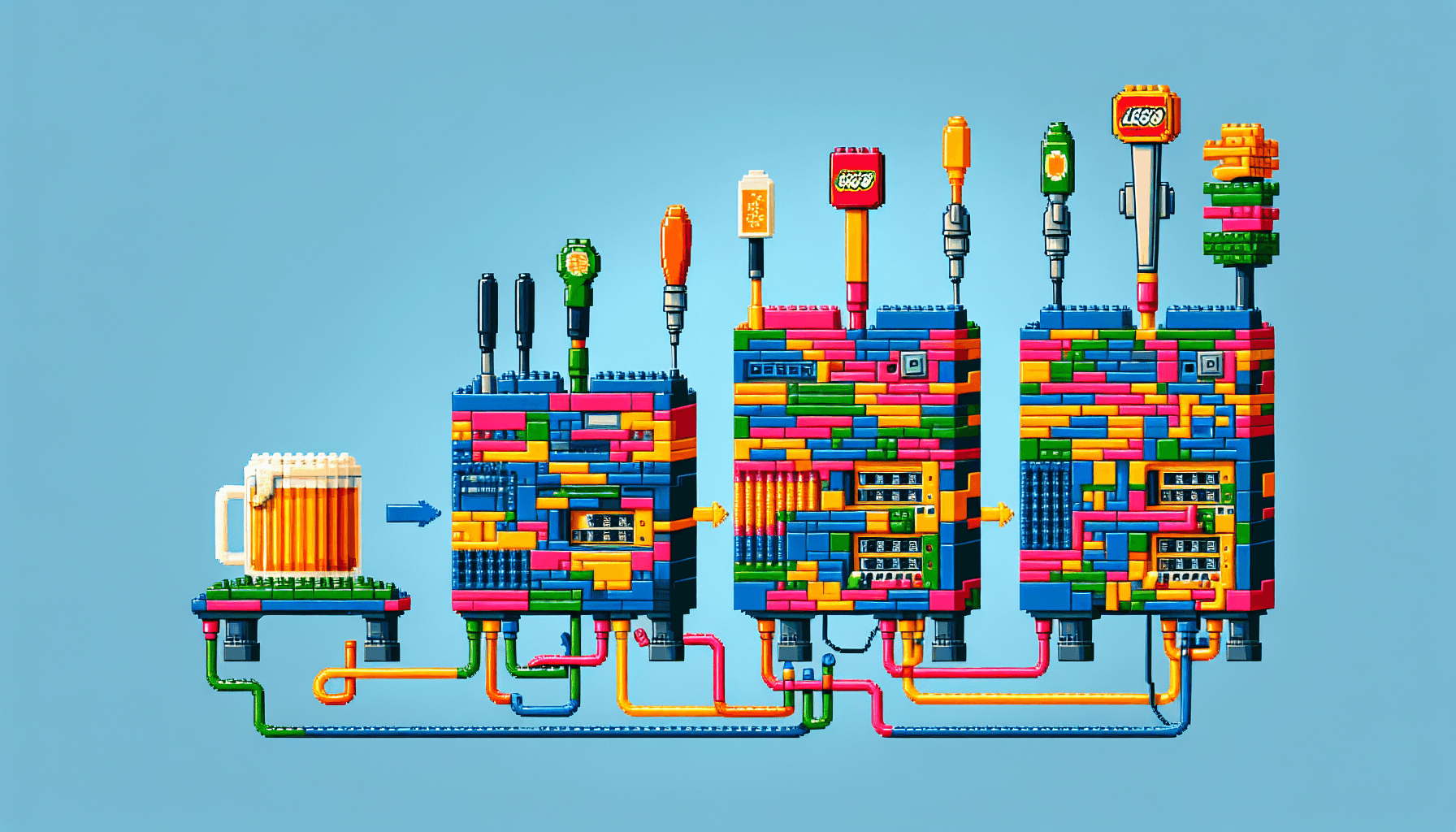Last year, I thought that we had reached some sort of peak in terms of how far one can go in building useless things by converting a 42U rack into a bar. Shortly after that, the people that built the bar visited San Francisco, and we started thinking about what the next project could be. After a good amount of alcohol, we discussed memories, and I started thinking back to the “Tech PoP” at DreamHack. You see, at DreamHack, the network volunteer crew used to have a couple of racks they set up for display showcasing the routers that powered the network.
By 2015, the network crew started filling the racks with useless hardware just to make it look cool. There was even a big NAS connected that served no purpose other than stroking the egos of the tech crew. The problem wasn't that they wanted to build something nice but that they didn't go far enough. If you're going to have useless hardware, why not explore the concept further? One of us started joking about converting one of the old core routers to a beer tap, and Wberg realized he might be able to source one of the routers of the same model that used to sit in that PoP.
 Plan of Attack
Plan of Attack
Fast forward to 2020, and we started discussing how to convert a Cisco 7609 into a beer tap. Wberg, who works as a network architect, found a used 7609 in working condition. The Cisco 7609 is a top-of-the-line router built around the year 2000 for ISPs to serve as a "core router." The first task was figuring out what our end result was going to be. Either modify the machine heavily to create a beer tap or keep it visually pleasing while it functioned as a router.
Initially, we believed we could salvage the LEDs. Since it was built in the early 2000s, I was skeptical about cutting these line cards. Nonetheless, Bengan & Summa cut right through all the line cards, removing approx. 70% of the parts. The outcome wasn't positive due to the differences in line card design and LED specifications, turning us to PLAN B.
 Finding Solutions to Constraints
Finding Solutions to Constraints
At this point, the biggest challenge was making it look perfect. Optical fiber technology came to the rescue, allowing us to transmit light from the LED strip to the front profiles.
We used 3D printing to create focusers for mounting the fiber cables against the chassi. This required parametric design to adjust for different LED counts. After some trial and error, we found stripping the fibers of cladding and using only the core provided adequate stability and press-fit.

 Writing the Software
Writing the Software
We had to create software that could mimic how a router behaves. I developed the software called Slisko, which ran on a Raspberry Pi and used the SPI port to drive all the LEDs. The software included a simple interface in Go allowing various blinking patterns, which made the automation more efficient.
Being able to quickly write test patterns for the LEDs was crucial. This saved us a lot of debug time, especially when mapping the software against the hardware placement.
 Assembling the Insanity
Assembling the Insanity
The assembly process involved removing unnecessary parts of the chassi to make room for the beer pipes. After some designing, experimentation with capacitors to stabilize the LED strips, and cabling, we finally got the LEDs to work perfectly. Our resident beer brewer, Foxbat, adapted a tap cooler into an intermediary fridge to keep the beer chilled.

 Result
Result
The converted 7609 router was a hit. The sheer novelty of the router-turned-beer-tap attracted a lot of attention and sold out all the beer brewed for the event.
Edworking is the best and smartest decision for SMEs and startups to be more productive. Edworking is a FREE superapp of productivity that includes all you need for work powered by AI in the same superapp, connecting Task Management, Docs, Chat, Videocall, and File Management. Save money today by not paying for Slack, Trello, Dropbox, Zoom, and Notion.

---
 Remember these 3 key ideas for your startup:
Remember these 3 key ideas for your startup:
- Innovative Repurposing: Repurposing old, seemingly useless hardware can yield both functional and novel results.
- Iterative Problem Solving: Employ iterative design and prototyping to overcome constraints, as demonstrated by our use of optical fiber and 3D printing.
- Detailed Planning and Execution: Crafting software and hardware to work together seamlessly, as shown by our reliance on mapping and debugging, ensures a polished final product.
For more inspiration and tips on productivity, check out Edworking.
For more details, see the original source.






